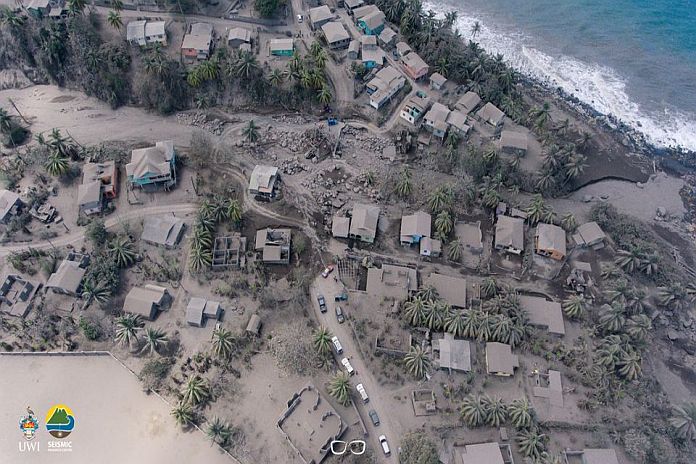By Caribbean News Global contributor
KINGSTOWN, St Vincent — UWI Seismic Research Centre update May 02, 2021, at 6:00 pm said the Seismic activity at La Soufrière, has remained low since the tremor associated with the explosion and ash venting on April 22.
“In the last 24 hours, only a few long-period, hybrid and volcano-tectonic earthquakes have been recorded and there was no further seismic tremor,” however, ” the volcano continues to be in a state of unrest. Explosions with accompanying ashfall, of similar or larger magnitude to those that have already occurred in this eruption, can take place with little or no warning.”
The update advised that “caution should be taken in traversing river valleys on the volcano due to the increased risk of lahars (mudflows) during periods of rainfall on the volcano. The volcano is at alert level RED,” the UWI seismic research centre, said on Sunday.
The United Nations has appealed for $29m in emergency aid for St Vincent. The UK extended further support to La Soufriere volcano relief. The new £550,000 (USD$ 695,000) contribution takes the total UK funding to over £800,000 (USD$ 1M) since the eruption began on April 9 and will be delivered via the World Food Programme (WFP).
Prime minister Ralph Gonsalves, said officials were still quantifying the damage, but that rebuilding would cost ‘hundreds of millions of dollars’ on top of ‘massive’ humanitarian relief needs,” added, “We have been set back decades.”
Last week, UWI Seismic Research Centre, scientists at the Belmont volcano observatory noted that there were lahar flows within the river system in the Red and Orange Volcano Hazard Zones. “Lahars are dense mixture of ash and water. This usually occurs during heavy rain which creates mudflow that destroys everything in its path as it rushes down the volcano’s slopes faster than a river. The lahars can pose a danger to persons visiting the Red and Orange Zones.”
The rainy season and hurricanes are of concern coupled with volcanic ashfall and mudflows. Last week, NEMO St Vincent and the Grenadines said, “rainfall accumulations ranging from 75 to 125 mm (3 to 5 inches) have already occurred over some parts of St Vincent and the Grenadines during the past six hours and a further 50 mm (2 inches) with isolated higher amounts are possible across the island over the next 24 hours after which a gradual improvement can be expected.”
Visit the International Volcanic Hazard Health Network for volcanic ash information and resources.





